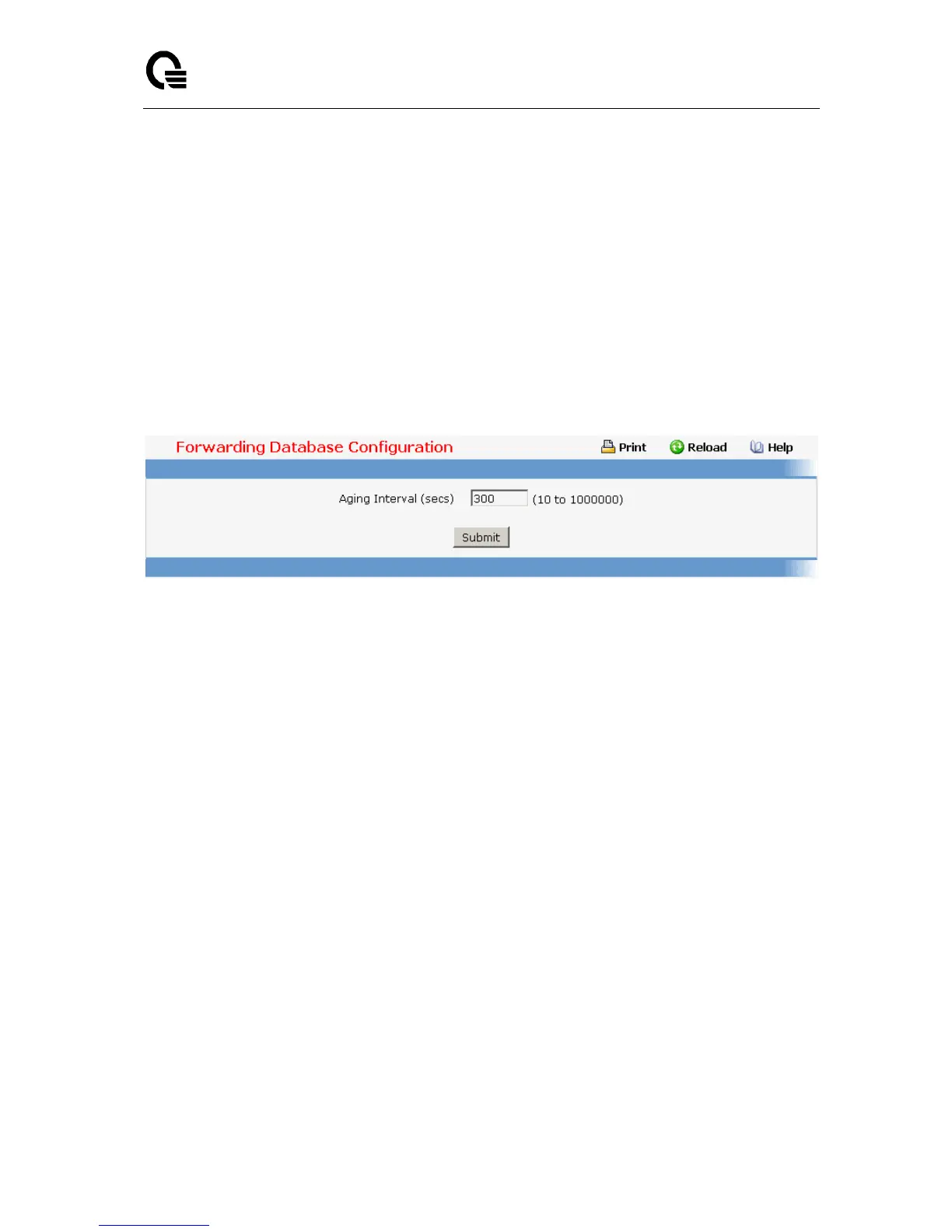Layer 2,3,IPv6+QoS Switch
_____________________________________________________________________________
Layer 2,3,IPv6+QoS Network Switch User Manual Version 0.1 Page: 646/970
11.2.1.4 Defining Forwarding Database
11.2.1.4.1. Configuring MAC Table aging interval time Page
Use this panel to set the Address Ageing Timeout for the forwarding database.
Configurable Data
Aging Interval(secs) - The forwarding database contains static entries, which are never
aged out, and dynamically learned entries, which are removed if they are not updated
within a given time. You specify that time by entering a value for the Address Ageing
Timeout. You may enter any number of seconds between 10 and 1000000. IEEE 802.1D
recommends a default of 300 seconds, which is the factory default.
Command Buttons
Submit - Update the switch with the values on the screen. If you want the switch to retain
the new values across a power cycle you must perform a save.
11.2.1.4.2. Viewing Forwarding Database Page
Use this panel to display information about entries in the forwarding database. These entries
are used by the transparent bridging function to determine how to forward a received frame.
Configurable Data
Filter - Specify the entries you want displayed.
Learned: If you choose "learned" only MAC addresses that have been learned will be
displayed.
All: If you choose "all" the whole table will be displayed.
MAC Address Search - You may also search for an individual MAC address. Enter the
two byte hexadecimal VLAN ID followed by the six byte hexadecimal MAC address in
two-digit groups separated by colons, for example 01:23:45:67:89:AB:CD:EF where 01:23
is the VLAN ID and 45:67:89:AB:CD:EF is the MAC address. Then click on the search
button. If the address exists, that entry will be displayed as the first entry followed by the
remaining (greater) MAC addresses. An exact match is required.
Non-Configurable Data
MAC Address - A unicast MAC address for which the switch has forwarding and/or
filtering information. The format is a two byte hexadecimal VLAN ID number followed by a
six byte MAC address with each byte separated by colons. For example:
01:23:45:67:89:AB:CD:EF, where 01:23 is the VLAN ID and 45:67:89:AB:CD:EF is the
